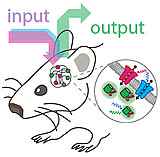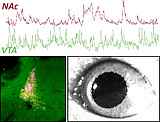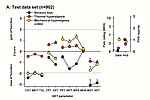You are here
Content
Our team investigates the connections between neuronal plasticity and long-lasting changes in neuronal networks. A particular focus is on how synaptic connections are adapted to store new information. We look at neuronal networks on different scales and investigate how pathological changes manifest themselves in the dysfunction of these neuronal networks. Here, we use and develop state-of-the-art optical and optogenetic methods to specifically study selected populations of synapses and neurons in specific brain areas.
Our research group focuses on the extent to which synaptic connections and synaptic plasticity are used to store information in the brain. We try to understand how functional and structural changes at different network levels influence cognitive processes. Read more ...
Dr. Andrey Formozov

We are interested in developing new methods, including software and hardware, for interrogation of the brain with a focus on genetically encoded fluorescent indicators and optogenetics, spanning from relatively simple photometry techniques up to the analysis of the activity of thousands of neurons. New experimental paradigms foster our ability to understand how computation occurs in the brain in different conditions and ultimately reveal underlying computational models.
Dr. rer. nat. Alexander Dieter
Neuromodulation

Our research interests focus on neuromodulators of the central nervous system, in particular dopamine and noradrenaline. We investigate how these neurotransmitters affect the global state of excitement and neuronal networks of the brain, as well as synaptic plasticity and behavior.
Dr. med. Wolfgang Greffrath
Nociception and pain

We are particularly investigating the mechanisms involved in the neuronal coding of actual or potentially tissue-damaging, so-called noxious stimuli in primary nociceptive neurons, as well as their transmission to and processing in the spinal cord. Read more ...
In acute slice preparations of the spinal cord or brain, we use patch-clamp recordings to investigate synaptic transmission and plasticity in healthy and diseased rodents (chronic back pain and addiction disease). Furthermore, we characterize neuronal network changes with chronic multichannel recordings during the processing of behaviorally relevant stimuli. We study neurons from humans with mental illness in cultures of induced pluripotent stem cells. Read more ...
PD Dr. sc. hum. biol. Walter Magerl
Central nervous plasticity of the nociceptive system and pain memory
Signals from primary nociceptive afferents are transmitted and processed within the CNS, leading, among other things, to the perception of these stimuli as painful. In addition, the transmission of excitation increases the sensitivity of the nociceptive system (central sensitisation), which manifests itself in hypersensitivity to mechanical stimuli.
We investigate the coding of actual or potentially tissue-damaging stimuli (noxious stimuli) in primary nociceptive neurons and the subsequent signal processing in the nociceptive system. We use electrophysiology and live cell imaging in cellular systems, electrophysiology and behavioral testing in rodent models of neuropathic pain and back pain, as well as psychophysics, electrophysiology and functional imaging in healthy volunteers and in patients with chronic pain or diseases of the nervous system. Read more ...



